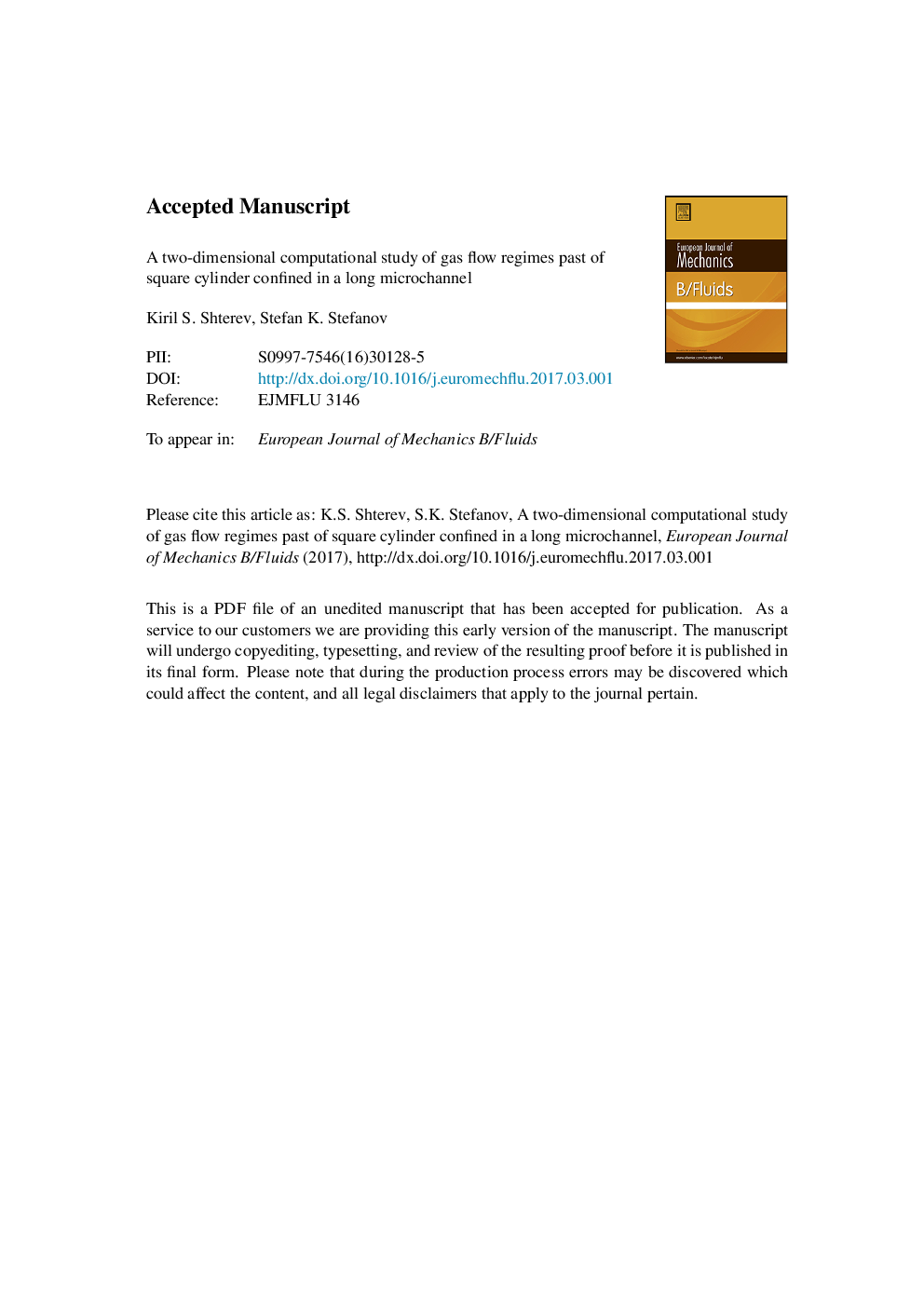| Article ID | Journal | Published Year | Pages | File Type |
|---|---|---|---|---|
| 4992388 | European Journal of Mechanics - B/Fluids | 2017 | 27 Pages |
Abstract
In this paper, the transition between steady and unsteady regimes of the two-dimensional gas flow past a moving square cylinder confined between two parallel plates with equal temperatures was investigated for different subsonic and transonic speeds and blockage ratios B=3, 5, 10 and 20 (B is the ratio between microchannel height and square size). The influence of B on the drag coefficient of the square, pressure at stagnation point and transition between steady and unsteady regime were studied. A set of transition curves were obtained for different blockage ratios. The results showed a similar shape of the neutral curves, which shifts to lower Knudsen and Mach numbers when B decrease. A continuum approach based on the Navier-Stokes-Fourier equations was basically applied to all flow regimes. Navier-Stokes-Fourier equations was calculated numerically by using pressure based finite volume algorithm SIMPLE-TS. For the initial transition velocity slip regime, the results were compared to data obtained by using the particle Direct Simulation Monte Carlo (DSMC) method.
Related Topics
Physical Sciences and Engineering
Chemical Engineering
Fluid Flow and Transfer Processes
Authors
Kiril S. Shterev, Stefan K. Stefanov,
